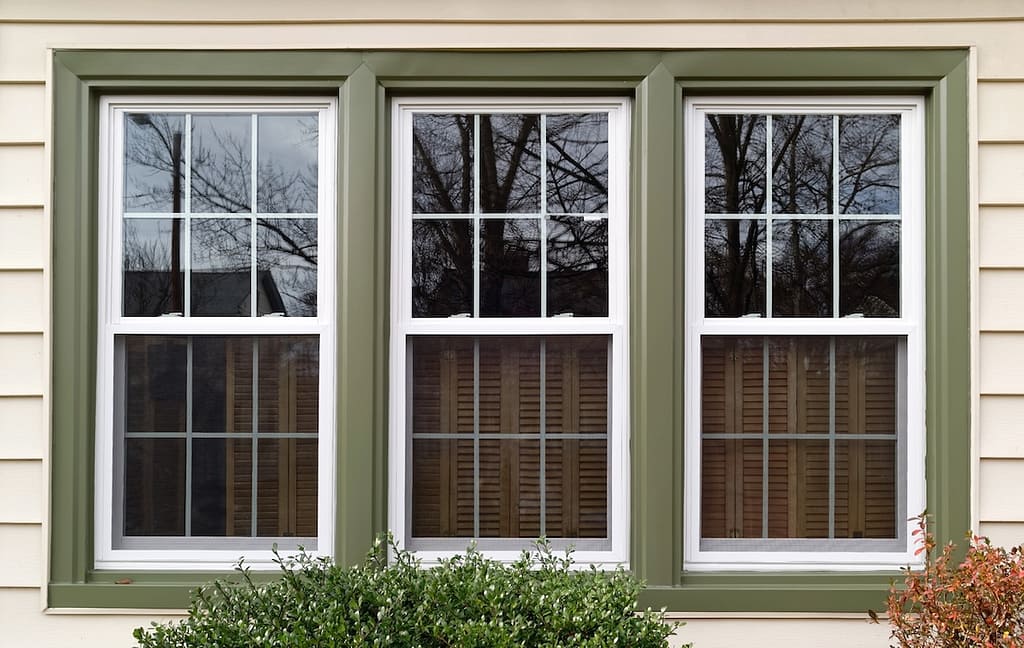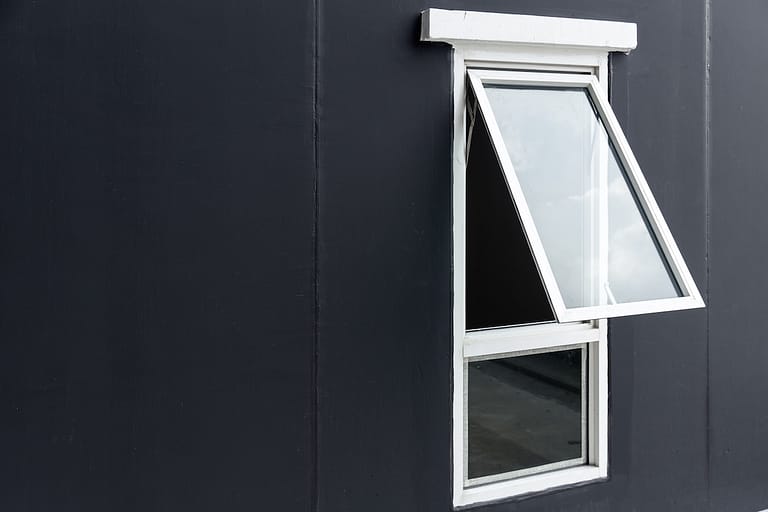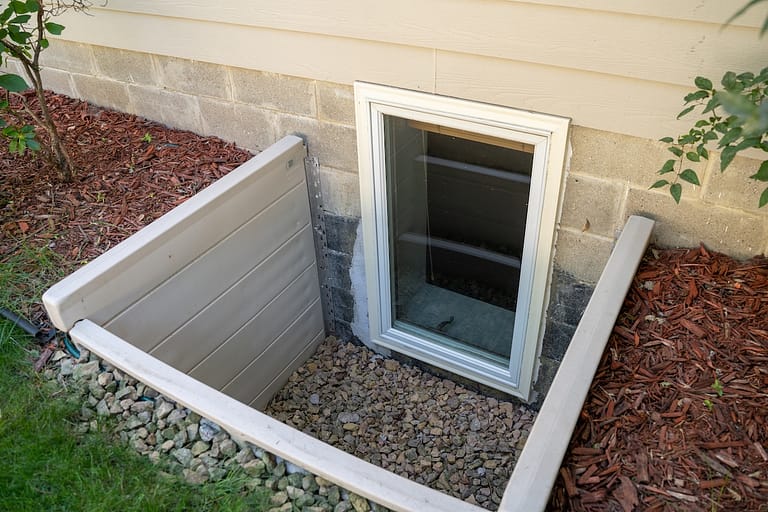Window flashing tape serves as your home’s first line of defense against water infiltration around windows. This self-adhesive waterproof barrier creates a seal between your window frame and the surrounding structure, preventing costly water damage that can lead to rot, mold, and structural issues.
Learning how to install window flashing tape correctly can save you thousands in potential repairs while ensuring your windows perform optimally for years to come. Here’s what we’ll cover:
- Understanding window flashing tape and its purpose
- 3 step installation process
- 8 critical do’s and don’ts for flashing tape installation
- Common installation mistakes and how to avoid them
- Maintenance and long-term performance
👉 Understanding Window Flashing Tape and Its Purpose

Window flashing tape, also known as window sealing tape or butyl tape, consists of a rubberized adhesive backing with a waterproof membrane face. This specialized tape creates a continuous barrier around window openings, directing water away from vulnerable areas where moisture could penetrate your home’s structure.
The tape works by adhering to both the window frame and the surrounding wall surface, forming a flexible seal that accommodates natural building movement while maintaining its waterproof integrity. Quality flashing tape can stretch and compress without losing adhesion, making it ideal for sealing gaps and irregularities around window installations.
Types of Window Flashing Tape
Several varieties of flashing tape are available, each designed for specific applications and conditions:
- Self-adhesive butyl tape: Offers strong adhesion and flexibility, ideal for most residential window installations and compatible with various siding materials.
- Peel-and-stick membrane tape: Features a stronger adhesive and thicker backing, perfect for tough installations or extreme weather conditions.
- Specialty tapes: Designed for specific window materials (vinyl, aluminum) or climates, like high-moisture environments.
✅ 3 Step Installation Process

A simple 3-step installation process saves time and reduces frustration, making it easy for anyone to set up. It ensures a hassle-free start, so you can focus on using the product right away.
1. Creating the Foundation Seal
- Install the sill flashing: Measure the window width and add 6 inches to each side for overlap, then cut the tape to size with clean edges.
- Position the tape correctly: Extend the tape beyond the window opening on both sides to adhere to both the frame and wall, directing water away.
- Secure the tape firmly: Press from the center outward to remove air bubbles and ensure a strong bond without gaps.
2. Installing Side Flashing
- Cut side flashing tape: Measure the window height and add 3 inches for overlap at the top and bottom, then cut two pieces of flashing tape.
- Create a shingling effect: Apply the side flashing, overlapping the sill flashing by at least 1.5 inches to help water flow downward.
- Seal and secure corners: Press firmly along the frame and wall, paying extra attention to corners to prevent water infiltration.
3. Completing with Head Flashing
- Measure and cut head flashing: Add 6 inches to the window width for overlap, ensuring full coverage on both sides.
- Position with proper overlap: Place the head flashing to extend 3 inches over the side flashing and 4 inches above the window frame.
- Press and seal securely: Firmly adhere the tape, maintaining proper water-shedding alignment to block water from getting behind the system.
🔎 8 Critical Do’s and Don’ts for Flashing Tape Installation

Proper flashing tape installation is crucial for preventing water damage and ensuring a durable, weather-resistant seal. Following the right techniques can save time, money, and costly repairs in the long run.
Do’s for Successful Installation
- Do follow the shingling principle—always install flashing so upper pieces overlap lower pieces, mimicking roof shingle installation. This ensures water flows away from vulnerable areas rather than behind the flashing system.
- Do maintain consistent overlap measurements—use at least 1.5 inches of overlap between tape pieces to ensure continuous protection. Insufficient overlap creates weak points where water can penetrate.
- Do press firmly during application—proper adhesion requires firm, consistent pressure across the entire tape surface. Use a hand roller or similar tool to ensure complete contact between the tape and substrate.
- Do check for air bubbles and wrinkles—these imperfections can compromise the seal and create entry points for moisture. Smooth out any irregularities immediately during installation while the adhesive remains workable.
Don’ts That Lead to Failure
- Don’t install tape in reverse order—installing head flashing before side pieces or side pieces before sill flashing violates the shingling principle and creates water infiltration points.
- Don’t stretch the tape during installation—excessive stretching can cause the tape to contract later, pulling away from surfaces and creating gaps. Apply tape at its natural length for optimal long-term performance.
- Don’t ignore surface preparation—installing flashing tape over dirty, wet, or damaged surfaces leads to adhesion failure and water infiltration. Take time to properly clean and prepare all surfaces before tape application.
- Don’t use inadequate overlap—skimping on overlap distances to save material costs creates vulnerability points where water can penetrate your home’s envelope. Follow manufacturer specifications for minimum overlap requirements.
👉 Common Installation Mistakes and How to Avoid Them
Avoiding installation mistakes is crucial to ensure your system functions as intended and prevents costly fixes down the line. Understanding common errors helps you save time, money, and frustration during the setup process.
Temperature-Related Issues
Installing flashing tape in extreme temperatures can compromise adhesion and long-term performance. Cold weather makes the tape stiff and difficult to conform to irregular surfaces, while excessive heat can cause premature adhesive flow before proper positioning.
Monitor weather conditions and plan installation during moderate temperature periods when possible. If you must install in challenging conditions, warm the tape slightly in cold weather or work in shaded areas during hot periods.
Inadequate Surface Preparation
Rushing through surface preparation often leads to installation failures. Moisture, dirt, or loose paint prevents proper adhesion, creating immediate vulnerability to water infiltration.
Take time to thoroughly clean and dry all surfaces. Use appropriate primers when recommended by the manufacturer, especially on challenging substrates like certain metals or treated lumber.
Improper Tape Handling
Mishandling flashing tape during installation can compromise its effectiveness. Avoid touching the adhesive surface with bare hands, as skin oils can reduce adhesion. Don’t allow the tape to fold onto itself, as separating it can damage the adhesive.
Store tape in moderate temperatures and keep it covered until ready for use. Plan your installation sequence to minimize handling and reduce the risk of contamination or damage.
🛠️ Maintenance and Long-Term Performance
Maintenance is crucial to ensure the long-term performance and reliability of any system or equipment. Regular upkeep helps prevent costly repairs and extends its overall lifespan.
Regular Inspection Schedule
- Schedule annual inspections to spot potential issues early.
- Check for edge lifting, discoloration, cracking, or water stains.
- Inspect seasonally in extreme weather conditions to prevent accelerated deterioration.
When to Replace Flashing Tape
- Replace if you notice moisture issues, visible deterioration, or adhesion loss.
- Factors like climate, building movement, and installation quality affect lifespan.
- Be proactive—replacing early prevents costly water damage.
🏠 Protect Your Home with Professional Window Installation
Learning how to install window flashing tape properly protects your home from water damage and ensures optimal window performance. While these techniques can help DIY enthusiasts achieve better results, professional installation provides the expertise and warranty protection that gives true peace of mind.
Ready to ensure your windows are properly protected? Contact Louisville Window Company today for a free consultation and discover why we’re Louisville’s trusted choice for window installation and replacement services.







